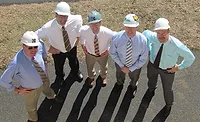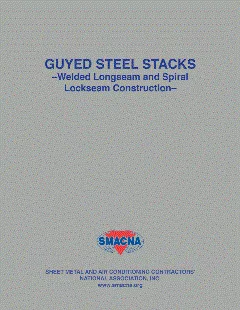Safety First?
Working at heights is inherently dangerous, and safety should always be the most important concern when the workplace is on the roof. With the recent changes to OSHA’s residential fall protection guidelines and a well-publicized push to increase OSHA enforcement, safety has been in the spotlight more than ever.

Working at heights is inherently dangerous, and safety should always be the most important concern when the workplace is on the roof. With the recent changes to OSHA’s residential fall protection guidelines and a well-publicized push to increase OSHA enforcement, safety has been in the spotlight more than ever. But what steps are contractors actually taking to ensure safety out in the field?
This summer, as the industry was coming to grips with changes in the residential fall protection guidelines, Roofing Contractor teamed up with BNP Media’s Market Research Division to conduct a survey to gauge the current state of occupational safety in the roofing industry.
The purpose of the Roofing Contractor Safety Study was to determine which safety measures contractors were currently using and which ones they planned to implement in the future.
An overview of the survey results is included here. We also asked Chip Macdonald, president of Best Safety and RC’s safety columnist, to provide expert commentary on the results from the perspective of a safety professional.

When asked what safety-related programs they currently have in place, respondents listed a variety of educational and measurement strategies. (See Figure 1). More than 71 percent held weekly safety meetings, and 42 percent had daily toolbox talks. Forty-three percent conducted weekly walkthroughs of the jobsite in which a first-line supervisor checked for hazards and collected data.
Companies listed a variety of methods they use for safety training, and the vast majority most used multiple techniques to get their points across. (See Figure 2.) Hands-on demonstrations were the most popular training technique, with 72 percent of contractors using them. About 63 percent used job safety analysis as a training tool. Other common training methods included peer observation and feedback (55 percent), lectures (47 percent), DVDs (45 percent), classroom training (43 percent), safety coaching (41 percent) and online training (24 percent). More than half of the companies used their own employees as instructors for at least part of the training process.

Of those companies using a fall protection scheme, 92 percent use some form of personal fall arrest system (PFAS). (See Figure 4.) Other components used included temporary anchorage (69 percent), warning line systems (69 percent) and scaffolds (41 percent). Permanent anchors were used by 38 percent of respondents, and 36 percent used portable anchorage devices on wheels for low-slope projects. About 39 percent of respondents mentioned slide guards for steep-slope work, but slide guards alone will not meet the current OSHA enforcement guidelines.
When it came to actual injury incidents and near misses, respondents also reported positive trends. Only 8 percent of companies saw the number of injuries increase in the past year, and only 1 percent reported an increase in close calls.

While cost was the factor cited by respondents as the biggest hurdle to improving workplace safety, most felt that in the end a comprehensive safety program was good for the bottom line. The majority of respondents (58 percent) were optimistic that their safety program would improve their profit picture, while 14 percent thought it would put a dent in profits.
Either way, many contractors who invest in safety programs were quick to point out that those who don’t give the entire industry a black eye. Several respondents said their biggest challenge was staying competitive with companies that do not comply with OSHA regulations.
One respondent summed it up this way: “As a professional roofing firm, we stand out and must cover the cost of safety that is not included in the price of our competitors.”
Click here to view the Roofing Contractor Safety Study.
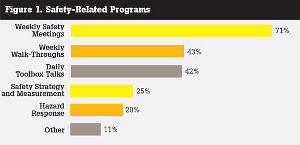

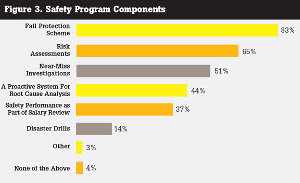
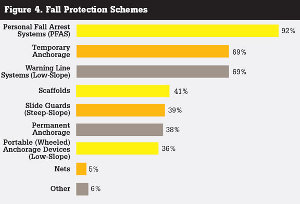
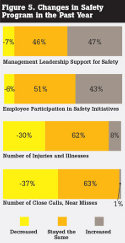
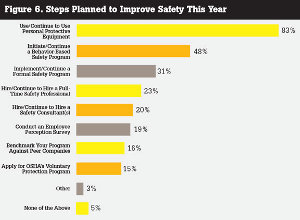

Let me start by saying that there are notable occupations which our society cannot do without. Like death and taxes, food, clothing and a roof over our heads are universal constants. However, it is remarkable to me that Roofing Contractor would consider conducting such an analytical study of the roofing industry in the first place, particularly in the current economic environment. Due to many socio-economic factors, the roofing industry is suffering from increased pressures in order to simply survive.
The long-range benefits of a dedicated movement toward “zero accidents” and “safety first” behavior are often lost to the profit margin, even in boom times. The inclination to self-assess your own industry during a severe and lengthy market downturn is, in my opinion, courageous. Most agree that opinion surveys are based on the premise that those queried are responding fully, accurately and truthfully. With more than 30 years investigating and interviewing safety in the field, however, it’s my opinion that most good faith responses to questions of safety behavior are as much about what the individual wants the truth to be as what the truth actually is. With that considered, the survey was very enlightening to me.
The Response Rate
The 3 percent national response rate (150 total) from a notoriously reticent segment of the workforce (construction) was probably anticipated. I would expect those contractors with weak and nonexistent safety programs, high injury rates, and token levels of management commitment to opt out of any published survey on risk management trends. However, a few of the responses hinted that some of these contractors did not back down. The demographic data (available online at www.roofingcontractor.com) indicated to me that the 2011 survey group was diversified: there were equal numbers of large and small contractors; there were equal numbers with gross sales above and below 1$ million. As corporate safety cultures are tied very closely to these two factors - size and sales - I was impressed by the equity for such a small statistical sample.
Safety and Profits
If the future of the roofing industry is to be augured, the question about the safety program’s effect on profit and loss is the keystone to this entire survey. It suggests that over half (58 percent) of the contractors surveyed are optimistic about the effects that safety has on profits. Only 14 percent are discouraged about this relationship, and about a quarter believe that safety and profit are not dating steady. I was taught young that “If you can see it first, you can build it later.” The 58 percent who remain optimistic that safety will (eventually) generate greater profit are the industry leaders who others will follow. I consider these the psychological tough-guys of the industry.
Company Commitment
When it comes down to actually targeting a workforce at zero accidents, the rubber always meets the road somewhere in middle management. The role of OSHA’s employer-designated competent person (CP) in any construction firm is the tip of the spear. Regardless of the number of hats he or she wears, nothing comes before his/her duties and authority to protect workers at any cost. The graph in Figure 6 implies that the direct hiring of a CP in 2011 who has no other obligatory or conflicting interests was considered a reasonable step to take by only a quarter of the respondents. However, OSHA’s Rules of Construction (1926.21) legally mandate every employer to designate one or more CPs to implement and audit the accident prevention program on site.
Personal Protective Equipment
I was discouraged that the foremost safety tool, according to Figure 6, given to the line worker is still (and probably always will be) personal protective equipment (PPE). PPE does not remove the hazard but simply invites it closer to the body. For instance, Personal Fall Arrest Systems (PFAS) allow the worker to suffer the effects of a fall, while a guardrail or restraint system (engineering control) prevents the fall from initiating. OSHA mandates the employer designate a CP for selection, fit-testing, inspecting, evaluating and training PPE primarily because the stuff can be dangerous in the hands of those unqualified. If the steps to improve a roofing contractor’s safety culture has its priorities in PPE first (83 percent) and delegating a behavior-based safety program second (48 percent), achieving zero accidents simply becomes an unrealistic goal.
Training Techniques
The graph in Figure 6 also showed a lot of good news. This chart included the most modern methods of training a workforce and creating a new and behavior-based safety culture. Perhaps, as a safety professional, I’ll actually live to see the day when “tribal knowledge” philosophies and barnyard-style on-the-job-training (putting the new calf with the old cow) come to an end. While I continue to see these primitive, old-school training practices on a daily basis here in the Northeast, I was encourage to realize these proven, professional and competent techniques of training and evaluating employees in safe work practices are encouraged elsewhere.
Employee Surveys
Almost a fifth of the respondents plan on involving their roofers in their own safety program (i.e., employee perception surveys). Who’d ever think roofing contractors really cared about what their workers thought about safety on the job? OSHA considers employees’ involvement in their own health and safety program to be mandatory. The fact is, ownership always encourages compliance. This encouragement indicates that roofing contractors are beginning to show signs of maturing.
Reality Check
In 2009 the Bureau of Labor Statistics fatality rate for construction workers was 9.7 per 100,000 (816 deaths). The same year the fatality rate for roofers was 34.7 per 100,000 (60 deaths). Workers’ compensation insurance premiums in the aerial trades have skyrocketed, becoming a major line item in any bid. Today, finishing a roof without an accident is paramount to being below budget and ahead of schedule.
Doing things differently depends on the three E’s: educate, enact and enable. First, employees must be competently educated by their employer in methods to work on roofs safely. Then they must choose to enact those safe work practices, and the employer must enable them to work safely regardless of productivity or profit. If all three E’s are not in place and practiced, eventually somebody’s going to get hurt or killed, and there goes the insurance rate as well as future jobs.
A Never-Ending Task
We all know that if roofing was easy and safe, everyone would be doing it, and everyone isn’t. According to this safety survey, the industry as a whole is apparently taking its first steps to changing its future. My sincere congratulations go out to all those who continually endeavor to keep everyone safe, even with no end in sight.
Chip Macdonald of Best Safety, Cambridge, N.Y., offers safety program implementation and management tailored to companies of all sizes. He can be reached at 888-913-2378 or bestsafe@capital.net.

Working at heights is inherently dangerous, and safety should always be the most important concern when the workplace is on the roof. With the recent changes to OSHA’s residential fall protection guidelines and a well-publicized push to increase OSHA enforcement, safety has been in the spotlight more than ever. But what steps are contractors actually taking to ensure safety out in the field?
This summer, as the industry was coming to grips with changes in the residential fall protection guidelines, Roofing Contractor teamed up with BNP Media’s Market Research Division to conduct a survey to gauge the current state of occupational safety in the roofing industry.
The purpose of the Roofing Contractor Safety Study was to determine which safety measures contractors were currently using and which ones they planned to implement in the future.
An overview of the survey results is included here. We also asked Chip Macdonald, president of Best Safety and RC’s safety columnist, to provide expert commentary on the results from the perspective of a safety professional.

Photo by Justin Sagarsee.
Safety Programs and Training
The web-based survey was sent to 5,911 Roofing Contractor subscribers, and 150 people responded, for a response rate of 3 percent. Respondents were anonymous. The companies in the sample were pretty evenly split between residential and commercial work and represented a wide range of sizes. About half of the companies made more than $1 million, while approximately half made less than $1 million.When asked what safety-related programs they currently have in place, respondents listed a variety of educational and measurement strategies. (See Figure 1). More than 71 percent held weekly safety meetings, and 42 percent had daily toolbox talks. Forty-three percent conducted weekly walkthroughs of the jobsite in which a first-line supervisor checked for hazards and collected data.
Companies listed a variety of methods they use for safety training, and the vast majority most used multiple techniques to get their points across. (See Figure 2.) Hands-on demonstrations were the most popular training technique, with 72 percent of contractors using them. About 63 percent used job safety analysis as a training tool. Other common training methods included peer observation and feedback (55 percent), lectures (47 percent), DVDs (45 percent), classroom training (43 percent), safety coaching (41 percent) and online training (24 percent). More than half of the companies used their own employees as instructors for at least part of the training process.

Photo courtesy of Capital Safety
Safety Measures in Use
The safety measures contracting firms are currently using are shown in Figure 3. More than 83 percent include some sort of fall protection scheme. About 65 percent perform risk assessments, and just over half conduct near-miss investigations. When it comes to compensation, 37 percent of companies surveyed use safety performance as part of the review process.Of those companies using a fall protection scheme, 92 percent use some form of personal fall arrest system (PFAS). (See Figure 4.) Other components used included temporary anchorage (69 percent), warning line systems (69 percent) and scaffolds (41 percent). Permanent anchors were used by 38 percent of respondents, and 36 percent used portable anchorage devices on wheels for low-slope projects. About 39 percent of respondents mentioned slide guards for steep-slope work, but slide guards alone will not meet the current OSHA enforcement guidelines.
Safety Trends
Trends regarding companies’ support of safety programs and the number of injuries and near misses showed some positive changes. (See Figure 5.) In the teeth of a tough economy, 93 percent thought management’s leadership and support of safety programs increased or stayed the same over the past 12 months, while 7 percent saw support decrease. The numbers were almost exactly the same when it came to employee support, with 94 percent stating that employee participation increased or stayed the same, while 6 percent reported a decrease.When it came to actual injury incidents and near misses, respondents also reported positive trends. Only 8 percent of companies saw the number of injuries increase in the past year, and only 1 percent reported an increase in close calls.

Improving Workplace Safety
The survey also asked respondents what steps they would take in the next year to improve the company’s safety culture. The results are shown in Figure 6. Some 83 percent of respondents said they would use or continue to use personal protective equipment, while 48 percent stated they would set up or continue a behavior-based safety program. About 23 percent of companies in the survey currently have or plan to hire a full-time safety professional, and 20 percent plan to use a safety consultant. About one-fifth of companies surveyed plan to conduct an employee perception survey; 16 percent compare their safety performance against other companies; and 15 percent have applied or will apply for OSHA’s voluntary protection program.While cost was the factor cited by respondents as the biggest hurdle to improving workplace safety, most felt that in the end a comprehensive safety program was good for the bottom line. The majority of respondents (58 percent) were optimistic that their safety program would improve their profit picture, while 14 percent thought it would put a dent in profits.
Either way, many contractors who invest in safety programs were quick to point out that those who don’t give the entire industry a black eye. Several respondents said their biggest challenge was staying competitive with companies that do not comply with OSHA regulations.
One respondent summed it up this way: “As a professional roofing firm, we stand out and must cover the cost of safety that is not included in the price of our competitors.”
Click here to view the Roofing Contractor Safety Study.







Special Commentary: A Safety Expert's Take on the RC Safety Survey
by Chip MacdonaldLet me start by saying that there are notable occupations which our society cannot do without. Like death and taxes, food, clothing and a roof over our heads are universal constants. However, it is remarkable to me that Roofing Contractor would consider conducting such an analytical study of the roofing industry in the first place, particularly in the current economic environment. Due to many socio-economic factors, the roofing industry is suffering from increased pressures in order to simply survive.
The long-range benefits of a dedicated movement toward “zero accidents” and “safety first” behavior are often lost to the profit margin, even in boom times. The inclination to self-assess your own industry during a severe and lengthy market downturn is, in my opinion, courageous. Most agree that opinion surveys are based on the premise that those queried are responding fully, accurately and truthfully. With more than 30 years investigating and interviewing safety in the field, however, it’s my opinion that most good faith responses to questions of safety behavior are as much about what the individual wants the truth to be as what the truth actually is. With that considered, the survey was very enlightening to me.
The Response Rate
The 3 percent national response rate (150 total) from a notoriously reticent segment of the workforce (construction) was probably anticipated. I would expect those contractors with weak and nonexistent safety programs, high injury rates, and token levels of management commitment to opt out of any published survey on risk management trends. However, a few of the responses hinted that some of these contractors did not back down. The demographic data (available online at www.roofingcontractor.com) indicated to me that the 2011 survey group was diversified: there were equal numbers of large and small contractors; there were equal numbers with gross sales above and below 1$ million. As corporate safety cultures are tied very closely to these two factors - size and sales - I was impressed by the equity for such a small statistical sample.
Safety and Profits
If the future of the roofing industry is to be augured, the question about the safety program’s effect on profit and loss is the keystone to this entire survey. It suggests that over half (58 percent) of the contractors surveyed are optimistic about the effects that safety has on profits. Only 14 percent are discouraged about this relationship, and about a quarter believe that safety and profit are not dating steady. I was taught young that “If you can see it first, you can build it later.” The 58 percent who remain optimistic that safety will (eventually) generate greater profit are the industry leaders who others will follow. I consider these the psychological tough-guys of the industry.
Company Commitment
When it comes down to actually targeting a workforce at zero accidents, the rubber always meets the road somewhere in middle management. The role of OSHA’s employer-designated competent person (CP) in any construction firm is the tip of the spear. Regardless of the number of hats he or she wears, nothing comes before his/her duties and authority to protect workers at any cost. The graph in Figure 6 implies that the direct hiring of a CP in 2011 who has no other obligatory or conflicting interests was considered a reasonable step to take by only a quarter of the respondents. However, OSHA’s Rules of Construction (1926.21) legally mandate every employer to designate one or more CPs to implement and audit the accident prevention program on site.
Personal Protective Equipment
I was discouraged that the foremost safety tool, according to Figure 6, given to the line worker is still (and probably always will be) personal protective equipment (PPE). PPE does not remove the hazard but simply invites it closer to the body. For instance, Personal Fall Arrest Systems (PFAS) allow the worker to suffer the effects of a fall, while a guardrail or restraint system (engineering control) prevents the fall from initiating. OSHA mandates the employer designate a CP for selection, fit-testing, inspecting, evaluating and training PPE primarily because the stuff can be dangerous in the hands of those unqualified. If the steps to improve a roofing contractor’s safety culture has its priorities in PPE first (83 percent) and delegating a behavior-based safety program second (48 percent), achieving zero accidents simply becomes an unrealistic goal.
Training Techniques
The graph in Figure 6 also showed a lot of good news. This chart included the most modern methods of training a workforce and creating a new and behavior-based safety culture. Perhaps, as a safety professional, I’ll actually live to see the day when “tribal knowledge” philosophies and barnyard-style on-the-job-training (putting the new calf with the old cow) come to an end. While I continue to see these primitive, old-school training practices on a daily basis here in the Northeast, I was encourage to realize these proven, professional and competent techniques of training and evaluating employees in safe work practices are encouraged elsewhere.
Employee Surveys
Almost a fifth of the respondents plan on involving their roofers in their own safety program (i.e., employee perception surveys). Who’d ever think roofing contractors really cared about what their workers thought about safety on the job? OSHA considers employees’ involvement in their own health and safety program to be mandatory. The fact is, ownership always encourages compliance. This encouragement indicates that roofing contractors are beginning to show signs of maturing.
Reality Check
In 2009 the Bureau of Labor Statistics fatality rate for construction workers was 9.7 per 100,000 (816 deaths). The same year the fatality rate for roofers was 34.7 per 100,000 (60 deaths). Workers’ compensation insurance premiums in the aerial trades have skyrocketed, becoming a major line item in any bid. Today, finishing a roof without an accident is paramount to being below budget and ahead of schedule.
Doing things differently depends on the three E’s: educate, enact and enable. First, employees must be competently educated by their employer in methods to work on roofs safely. Then they must choose to enact those safe work practices, and the employer must enable them to work safely regardless of productivity or profit. If all three E’s are not in place and practiced, eventually somebody’s going to get hurt or killed, and there goes the insurance rate as well as future jobs.
A Never-Ending Task
We all know that if roofing was easy and safe, everyone would be doing it, and everyone isn’t. According to this safety survey, the industry as a whole is apparently taking its first steps to changing its future. My sincere congratulations go out to all those who continually endeavor to keep everyone safe, even with no end in sight.
Chip Macdonald of Best Safety, Cambridge, N.Y., offers safety program implementation and management tailored to companies of all sizes. He can be reached at 888-913-2378 or bestsafe@capital.net.
Looking for a reprint of this article?
From high-res PDFs to custom plaques, order your copy today!



